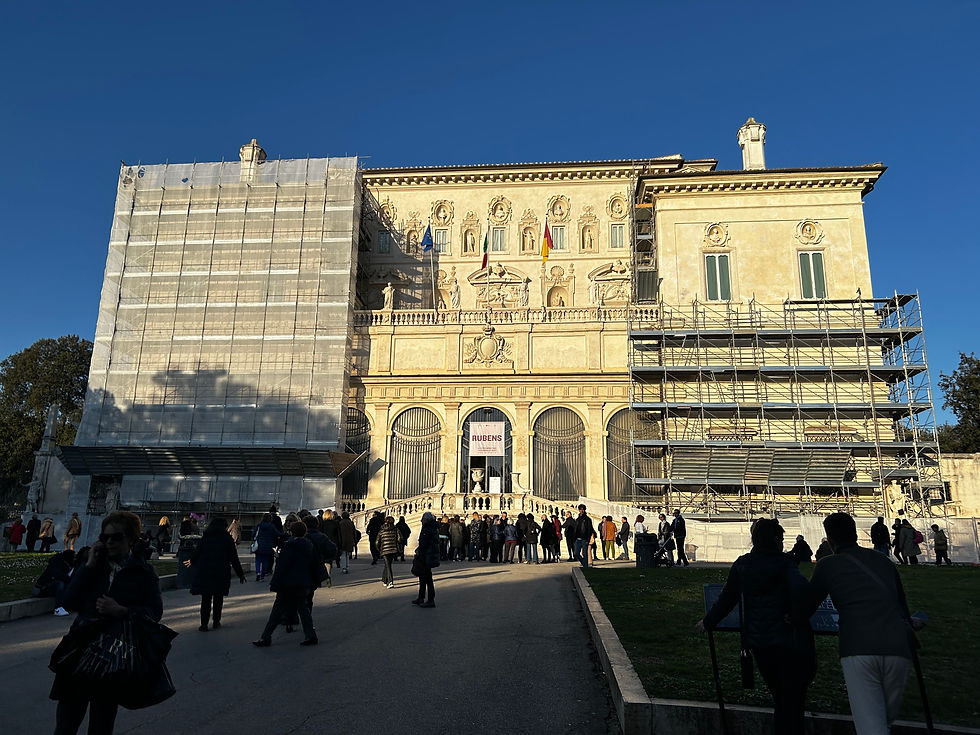𝐄𝐱𝐩𝐥𝐨𝐫𝐢𝐧𝐠 𝐭𝐡𝐞 𝐃𝐞𝐩𝐭𝐡𝐬 𝐨𝐟 𝐭𝐡𝐞 𝐑𝐨𝐦𝐚𝐧 𝐂𝐨𝐥𝐨𝐬𝐬𝐞𝐮𝐦
- Marianne Hartner-Godown

- Apr 10, 2024
- 2 min read

The Arch of Constantine next to the Colosseum
The Colosseum in Rome is at the top of everyone’s must-see list in Rome, and naturally it was at the top of ours as well. But we wanted to take a different approach and see a different part of the Colosseum—the underground!
Three years after the completion of the building of the Colosseum in 80 AD, Emperor Domitian said, “Let’s take it up to 11”, and ordered a major renovation to create a hypogeum - a vast, subterranean labyrinth beneath the arena floor. With the help of a skilled master builder named Haterius and his team, the hypogeum's sophisticated engineering enabled animals, gladiators, and scenery to appear before the spectators from underneath the arena floor through special effects. The enormous pressure was on Haterius to pull off the complex machinery needed to dazzle the crowd, and he succeeded.
Underground tunnels of the Colosseum
The hypogeum was the underground staging area for the games. It was an elaborate network of tunnels, cages, and holding rooms beneath the arena floor where the gladiators, slaves, prisoners, and animals waited before being forced into the arena. Back in its heyday, these underground tunnels would have been dark, hot, loud, and foul-smelling, so we were grateful to have the open areas above us!
Underground tunnels that used to be under the arena floor. Look how low the ceiling was here!
In the hypogea of the Colosseum there were freight elevators that allowed the machinery and animals used in the games to get on to the arena floor from underground. To raise the scenic materials to the surface from the underground, articulated systems with ramps, cranes, pulleys, counterweights, and inclined planes were used, of which the holes in the paving of the corridors are still visible today.
Left: The canal used to flood the floors with water in order to launch naval battles in the arena
Middle: reconstruction of one of the elevators used to lift animals and people up to the arena floor
Right: Underground area under the reconstructed arena floor
It was just in the last three years that the underground of the Colosseum became open to the public, so it felt like a special treat to be able to see these areas that had once been closed off. Even if you have visited the Colosseum in the past, it’s worth going back to see the underground areas you missed before! Exploring this area gives you a behind-the-scenes look at the intense preparation that went into producing the public spectacles. You get the chance to stroll down the same central corridor that the gladiators once strode. You can also see canals that were used to launch mock sea battles when the Colosseum was flooded, and the cages that the animal were kept in.
Left: View of the underground of the Colosseum which was once covered by the arena floor
Middle: Ringside seats for the senators made with marble
Right: A reconstruction of a trap door used to bring animals onto the arena floor
To learn more about the Underground Colosseum tour we took and to see more tour options, click here: https://www.viator.com/tours/Rome/Expert-Guided-Tour-of-Colosseum-Underground-Arena-and-Forum/d511-55341P7?pid=P00005400&uid=U00043825&mcid=58086¤cy=USD




























Comments